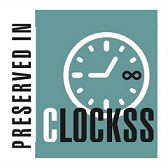The Silent Impact of Pandemic: COVID-19 and Adolescent-Youth Reproductive Health in Acholi Sub-Region in Uganda
Abstract
From a gender perspective, this study investigated the consequences of COVID-19 on adolescent and youth reproductive health in Acholi Sub-region, Northern Uganda. The study aimed to: i) analyse the impact of the COVID-19 lockdown on adolescent and youth reproductive health and gender relations, ii) explore treatment-seeking behaviours among adolescents and youth, iii) equip health workers with skills to address reproductive health challenges, and iv) enhance their capacity to conduct gender-sensitive research during crises. A qualitative approach and longitudinal design was used, employing one-on-one interviews, community engagement sessions, radio talk shows, and observations. The study involved participants from Gulu Regional Referral Hospital, Reproductive Health Uganda, outreach programs, and urban neighbourhoods, including adolescents, youth, health workers, and key informants. It was conducted across Gulu City, Gulu District, Obongi District, and Adjumani District, encompassing 34 schools, the Northern Uganda Youth Development Centre, Gulu Juvenile Prison, and Gulu University. Findings indicated a significant increase in gender-specific challenges, including a rise in teenage pregnancies, unwanted pregnancies, early marriages, and cross-generational sexual relationships. Male adolescents faced psychological stress due to unemployment and the inability to fulfil societal expectations, while female adolescents disproportionately experienced reproductive health risks. The study concludes that the COVID-19 pandemic severely impacted Ugandan youth's reproductive health, with adolescent females experiencing more disempowerment and risky behaviours. The study recommends implementation of targeted and gender-sensitive interventions, strengthening collaboration among health workers, adolescents, youth groups and community leaders, promotion of mental health empowerment programs, as well as continued strengthening of health system responsiveness to youth needs.
Downloads
References
Friedman, H. L. (1994). Reproductive health in adolescence. World Health Statistics Quarterly, 47(1), 31-35.
Ghosh, M., Gupta, R., Arya, S., Rathee, S., & Rawat, V. (2014). Factors associated with treatment seeking behaviour in adolescent substance abuser in a de addiction centre in North India. Int J Med Sci Public Health, 3(11), 1376-80.
Henttonen, M., Watts, C., Roberts, B., Kaducu, F., & Borchert, M. (2008). Health services for survivors of gender-based violence in northern Uganda: a qualitative study. Reproductive health matters, 16(31), 122-131.
Hoven, H., Dragano, N., Angerer, P., Apfelbacher, C., Backhaus, I., Hoffmann, B., ... & Söhner, F. (2022). Striving for health equity: The importance of social determinants of health and ethical considerations in pandemic preparedness planning. International journal of public health, 67, 1604542.
Lubaale, Y. (2021). Teenage Pregnancy and the COVID-19 Pandemic in Uganda. Makerere Institute of Social Research.
Ministry of Health (2000). National Policy for Adolescent Health for Uganda. Government of Uganda.
Ministry of Health Uganda (2021). Annual Health Sector Performance Report 2020/2021.
Moro, J., Okello, T., & Acana, C. (2023). Youth, Gender, and Health in Post-Conflict Northern Uganda: Implications of COVID-19. Journal of African Health Studies, 45(2), 115-132.
Musoke, R. (2022). “Covid-19 baby boom”. The Independent News. April 24, 2022, Kampala, Uganda.
Namulondo, V., Najjuma, R., Kasirye, G. K., & Walimbwa, M. (2024). Exploring Affordances of Online and Offline Strategies for Continuity of Learning in Secondary Schools during Pandemics: Lessons from Uganda's Response to the COVID-19 Pandemic. East African Journal of Education Studies, 7(2), 348-363.
Neema, S., Musisi, N., & Kibombo, R. (2004). Adolescent sexual and reproductive health in Uganda: a synthesis of research evidence. New York: Alan Guttmacher Institute..
Otieno, G. O., Ouedraogo, L., Nkurunziza, T., Asmani, C., Elamin, H., Muriithi, A., & Adegboyega, A. A. (2021). Continuity of essential sexual and reproductive health services during Covid-19 pandemic in the WHO African region.
Otto, I. O. (2021). Teenage pregnancies spike in Acholi as Covid lockdown bites. The Monitor Paper. Monday, June 14, 2021.
Plan International (2022). COVID-19 Aftershocks: The Impact on Girls and Young Women in Uganda.
Russo, R. G., Li, Y., Ðoàn, L. N., Ali, S. H., Siscovick, D., Kwon, S. C., & Yi, S. S. (2021). COVID‐19, social determinants of health, and opportunities for preventing cardiovascular disease: a conceptual framework. Journal of the American Heart Association, 10(24), e022721.
Sawyer, S. M., Azzopardi, P. S., Wickremarathne, D., & Patton, G. C. (2018). The age of adolescence. The lancet child & adolescent health, 2(3), 223-228.
Sekiwunga, R. & SR Whyte. 2009. Poor parenting: teenagers’ views on adolescent pregnancy in eastern Uganda. African Journal of Reproductive Health 13 (4): 21-35.
Sulakshana, B., Naik Vijaya, A., & Mallapur, M. D. (2012). Treatment seeking behaviour of rural adolescent girls–a community based cross-sectional study. International Journal of Medicine and Public Health [Int. J. Med. Public Health], 2(2), 24.
Troxler, P., & Kuhnt, B. (2007). Future workshops. The unthinkable and how to make it happen. Hands-on knowledge co-creation and sharing: Practical methods & techniques, 483-495.
Tumwesigye, J. (2020). COVID-19 Educational Disruption and Response: Rethinking e-Learning in Uganda. Konrad Adenauer Stiftung
UBOS & UNICEF (2022). National Survey on Adolescent Wellbeing in Uganda.
UNESCO (2021). Keeping Girls in the Picture: Addressing the Impact of COVID-19 on Girls’ Education in Uganda.
UNFPA (2020). Impact of the COVID-19 Pandemic on Family Planning and Ending Gender-based Violence, Female Genital Mutilation and Child Marriage.
United Nations (2020). Policy brief: The impact of COVID-19 on women. Available from: http://www.un.org/theimpactof COVID- 19onwomen/publications/en.pdf
World Health Organisation (1965). Health problems of adolescents. Technical report series 308. Geneva: World Health Organization, 1965.
World Health Organisation (2021). The impact of COVID-19 on health and care workers: a closer look at deaths. Health Workforce Department – Working Paper 1. Geneva: World Health Organization; September 2021 (WHO/HWF/WorkingPaper/2021.1). Licence: CC BY-NC-SA 3.0 IGO. Accessed on July 7, 2025.
World Health Organization (2020). WHO Director-General’s opening remarks at the media briefing on COVID19, WHO, 2020 11 March. Available at: https://www. who.int/dg/speeches/detail.
Copyright (c) 2025 Agatha Alidri, Emily Kayeny Uramba, Filda Anicia, Winnie Apio, Patrick Ochen, Patrick Kabwijamu, Simon Okello, Proscovia Nyamungu, Esther Giramiya, Richard Musaasizi, Samson Tumanye, Susan Awor, Francis Atube, Charles Nelson Okumu

This work is licensed under a Creative Commons Attribution 4.0 International License.




























